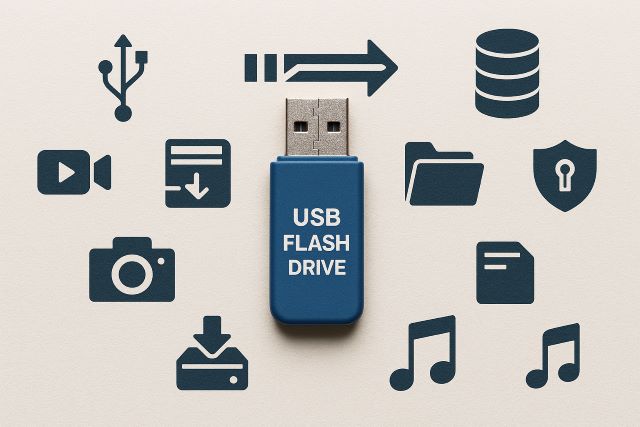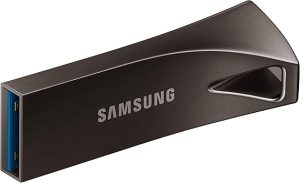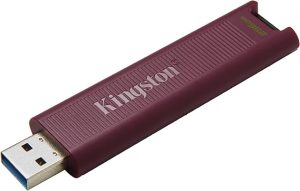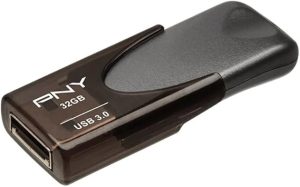Navigation Tree
- + Smart Home Devices for Every Home
- +-- Best Smart Home Devices to Upgrade Your Life
- +---- USB Flash Drives: Speed, Storage & Value Compared (Current page)

Contents
- 1 Best USB Flash Drives: Speed, Storage & Value Compared
- 1.1 Comparison Table: Best USB Flash Drives
- 1.2 Detailed Reviews
- 1.2.1 1. SanDisk Ultra Flair – Best Budget Pick
- 1.2.2 2. Samsung BAR Plus – Most Durable
- 1.2.3 3. Kingston DataTraveler Max – Fastest Option
- 1.2.4 4. Corsair Flash Voyager GTX – Editing & Video Recording
- 1.2.5 5. PNY Turbo Attaché 4 – Best for Compatibility
- 1.2.6 6. Lexar JumpDrive S47 – Compact & Portable
- 1.3 Buyer’s Guide: How to Choose a USB Flash Drive
Best USB Flash Drives: Speed, Storage & Value Compared
USB flash drives may seem old-school, but they’re still one of the most popular storage tools worldwide. According to Statista, over 560 million USB sticks are sold annually, and the global portable storage market is projected to hit $10 billion by 2030. Despite cloud storage dominance, flash drives remain essential for students, professionals, and creators who need fast, offline, and secure file transfers. From 4K video recording on-the-go to bootable OS backups, the right USB stick can save time and frustration. The problem? With hundreds of options—different sizes, speeds, and price ranges—it’s tricky to choose. That’s why we’ve compared today’s top USB flash drives so you can easily pick the one best suited for budget, performance, or compatibility.
Comparison Table: Best USB Flash Drives
| Model | Storage Options | USB Standard | Speed (Read/Write) | Best For | Price Range | Buy Now |
|---|---|---|---|---|---|---|
| SanDisk Ultra Flair | 32GB–512GB | USB 3.0 | 150 MB/s | Budget & everyday use | $ | |
| Samsung BAR Plus | 64GB–256GB | USB 3.1 | 300 MB/s | Durability & portability | $ | |
| Kingston DataTraveler Max | 256GB–1TB | USB 3.2 Gen 2 | 1,000/900 MB/s | Large file transfers | $$ | |
| Corsair Flash Voyager GTX | 256GB–1TB | USB 3.1 | 440 MB/s | Video editing & 4K content | $$ | |
| PNY Turbo Attaché 4 | 32GB–256GB | USB 3.0 | 100 MB/s | Affordable, wide compatibility | $ | |
| Lexar JumpDrive S47 | 32GB–512GB | USB 3.1 | 250 MB/s | Compact & keychain-friendly | $ |
Detailed Reviews
1. SanDisk Ultra Flair – Best Budget Pick

- Pros: Very affordable, reliable brand, decent speeds.
- Cons: Gets hot during large transfers, plastic build.
- Best For: Students, light storage needs, quick backups.
2. Samsung BAR Plus – Most Durable

- Pros: Sleek metal body, water/shock resistant, compact.
- Cons: Limited to 256GB, slightly pricier than budget drives.
- Best For: Travelers, outdoor workers, daily carry.
3. Kingston DataTraveler Max – Fastest Option

- Pros: Incredible 1GB/s transfer speeds, up to 1TB capacity.
- Cons: Expensive, bulkier design.
- Best For: Professionals transferring large files, video producers.
4. Corsair Flash Voyager GTX – Editing & Video Recording

- Pros: SSD-like performance, stable sustained writes, rugged design.
- Cons: Heavier, higher price tag.
- Best For: 4K/8K video capture, portable editing setups.
5. PNY Turbo Attaché 4 – Best for Compatibility

- Pros: Works well with older USB 2.0/3.0 ports, affordable.
- Cons: Slower speeds, basic design.
- Best For: Users with older PCs, office file sharing.
6. Lexar JumpDrive S47 – Compact & Portable

- Pros: Ultra-small, stays plugged in laptops, decent speed.
- Cons: Easy to misplace, not rugged.
- Best For: Laptop users who want a “set and forget” drive.
Buyer’s Guide: How to Choose a USB Flash Drive
-
Capacity: Common sizes range from 32GB (basic) to 1TB (professional use). Consider what you’ll store: documents, videos, or system backups.
-
Speed: Look for USB 3.1/3.2 if you transfer large files—these are up to 20× faster than USB 2.0.
-
Durability: Metal or rugged casings protect against drops and water damage—ideal for travel.
-
Compatibility: If you use older devices, choose drives that are backward-compatible with USB 2.0.
-
Form Factor: Slim designs (like the Lexar S47) are great for laptops, while larger drives handle heat better.
-
Budget vs. Performance: Under $20 is fine for casual use, but pros working with video or engineering files should invest in high-speed models.
Outbound link (SEO): Learn more about USB Flash standards on Wikipedia.
